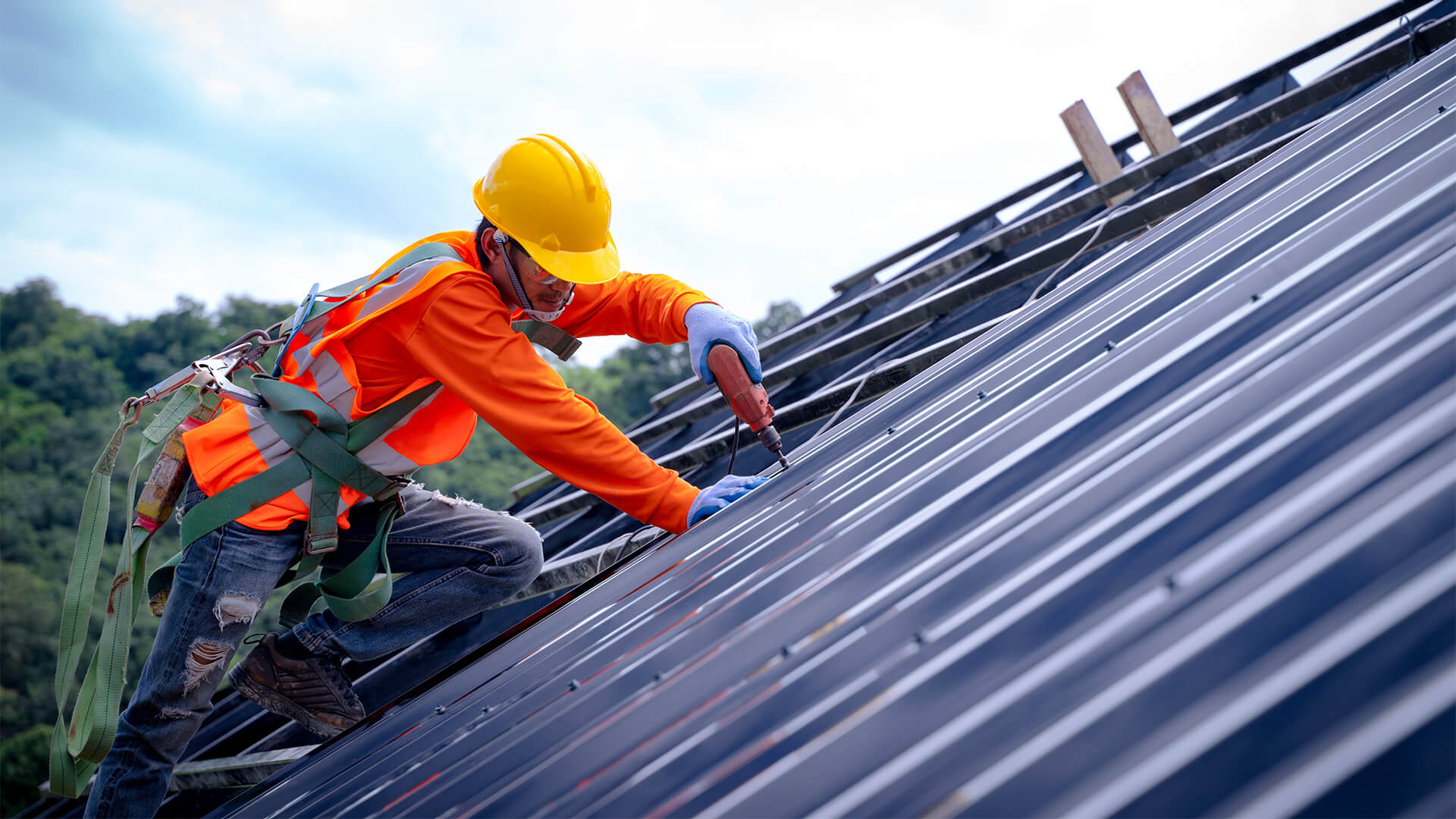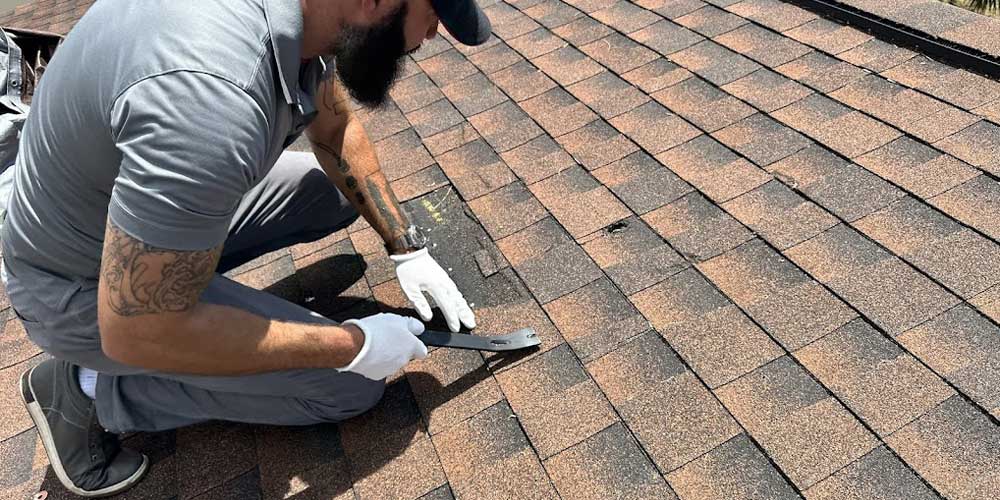Roof Repair Oahu: Specialist Roof Fixes for Lasting Security
Roof Repair Oahu: Specialist Roof Fixes for Lasting Security
Blog Article
Understanding the Various Kinds Of Roofs: A Comprehensive Guide for Homeowners
In the realm of homeownership, selecting the suitable roof style is a decision that brings considerable ramifications for both performance and visual charm. With a variety of choices-- varying from the standard gable to the modern level-- each type provides distinct advantages and challenges that should align with the property owner's details demands and ecological factors to consider. Understanding these distinctions not just aids in making an educated choice yet additionally affects long-lasting maintenance and energy performance. As we discover the ins and outs of different roofing system types, it becomes noticeable that dimension does not fit all; the best choice might shock you.
Saddleback Roof
Gable roofings, characterized by their triangular shape, are amongst the most preferred roofing designs due to their simplicity and performance in dropping water and snow. This layout features 2 sloping sides that fulfill at a ridge, permitting reliable drain and minimizing the threat of water build-up. The high pitch typically connected with gable roofings enhances their capability to deal with heavy rainfall, making them suitable for different climates.
Along with their functional advantages, gable roofings provide aesthetic flexibility. They can be adjusted to different architectural styles, from standard to modern homes. The layout can also accommodate extra functions such as dormer windows, which boost natural light and air flow in the attic room space.
Furthermore, saddleback roofs give ample area for insulation, contributing to power performance. Property owners can pick from a selection of roofing materials, including asphalt roof shingles, steel, and floor tiles, better boosting customization choices.
Despite their advantages, gable roofings might call for additional support in locations vulnerable to high winds or hefty snowfall. On the whole, the saddleback roof remains a favored choice as a result of its mix of capability, durability, and visual allure.
Apartment Roofs
Flat roofings are typically acknowledged for their minimalist design and sensible applications, specifically in industrial and commercial setups (oahu roofing). These roofings feature a horizontal or virtually horizontal surface, which permits very easy building and versatile space use. While they might lack the visual charm of pitched roofs, level roofings provide numerous advantages, especially in city atmospheres where making best use of room is critical
One of the main advantages of level roofing systems is their ease of access. Homeowners can make use of the roofing area for various purposes, such as roof gardens, terraces, or photovoltaic panel installations. Additionally, level roofing systems are generally more cost-effective to preserve and install contrasted to their sloped counterparts, as they call for fewer products and labor.
Nevertheless, level roofings do present specific obstacles. Appropriate drainage is vital to protect against water pooling, which can cause leakages and structural damage. Therefore, choosing top quality waterproofing products and routine examinations are vital for making certain longevity. Common materials utilized for level roof coverings include built-up roofing (BUR), customized asphalt, and single-ply membrane layers, each offering distinct advantages. Overall, flat roof coverings function as a versatile and practical choice for many home owners and organizations alike.
Hip Roof Coverings
Hip roofs are identified by their sloped sides that merge on top, creating a ridge. This layout stands out from saddleback roofs, as all 4 sides of a hip roof slope downwards towards the wall surfaces, giving a more stable structure. The angle of the slopes can vary, enabling for adaptability in building aesthetic appeals and performance.
Among the main benefits of hip roof coverings is their ability to stand up to heavy winds and damaging weather. The sloped surfaces make it possible for much better water drainage, lowering the danger of leaks and water damages. Additionally, hip roofs offer boosted attic room, which can be used for storage space or perhaps converted right into livable locations.
However, creating a hip roofing system can be extra complicated and pricey than less complex roof kinds, such as saddleback roofs. The extra material and labor associated with developing the slopes and making certain site appropriate architectural stability can lead to higher expenses. Regardless of these disadvantages, many home owners prefer hip roofing systems for their durability, aesthetic allure, and potential for energy performance.
Mansard Roofs
Mansard roofings, often acknowledged by their one-of-a-kind four-sided design, attribute two inclines on each side, with go to my blog the reduced slope being steeper than the upper. This building design, originating from France in the 17th century, is not just cosmetically attractive yet functional, as it maximizes the functional room in the upper floorings of a structure. The high reduced slope enables for even more headroom, making it a suitable selection for attics or loft spaces, which can be exchanged living rooms.
Mansard roofing systems are defined by their convenience, suiting numerous building designs, from typical to modern. They can be constructed with different products, consisting of asphalt tiles, slate, or steel, giving homeowners with a series of options to match their choices and spending plans. Furthermore, the style enables for the integration of dormer windows, boosting all-natural light and air flow in the upper levels.
However, it is necessary to think about the prospective drawbacks. Mansard roofing systems might call for even more maintenance due to the intricacy of their layout, and their steep slopes can be testing for snow and rainfall runoff. Overall, mansard roof coverings incorporate beauty with practicality, making them a preferred selection among homeowners looking for unique architectural attributes.
Dropped Roofs
As homeowners significantly seek simplicity and capability in their building designs, dropped roofs have actually become a popular option. Characterized by a solitary sloping plane, a shed roof offers a minimal aesthetic that enhances different home styles, from modern to rustic.
Among the main advantages of a shed roof is its uncomplicated building, which frequently converts to check it out decrease labor and product prices. This design enables reliable water drainage, decreasing the threat of leakages and water damages. Additionally, the vertical incline gives ample area for skylights, improving all-natural light within the inside.
Shed roofing systems additionally supply flexibility in terms of use. They can be properly incorporated right into enhancements, garages, or outdoor structures like pavilions and sheds. Additionally, this roofing design can suit numerous roof covering materials, including metal, asphalt shingles, or even eco-friendly roofings, aligning with eco-friendly initiatives.
However, it is important to think about regional climate conditions, as hefty snow lots might require modifications to the roofing's angle or structure. In general, shed roofs present a practical and visually pleasing option for homeowners looking to optimize performance without compromising style.
Verdict


Gable roofs, identified by their triangular shape, are amongst the most preferred roofing styles due to their simpleness and efficiency in losing water and snow. oahu roofing. The steep pitch frequently associated with gable roof coverings boosts their ability to deal with heavy rainfall, making them appropriate for numerous climates
While they may do not have the aesthetic appeal of pitched roofs, level roof coverings provide many advantages, especially in city environments where maximizing area is vital.

Report this page